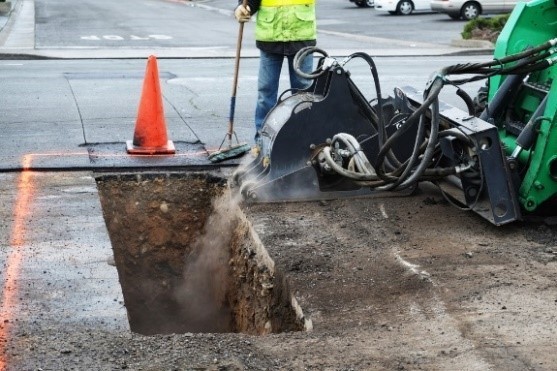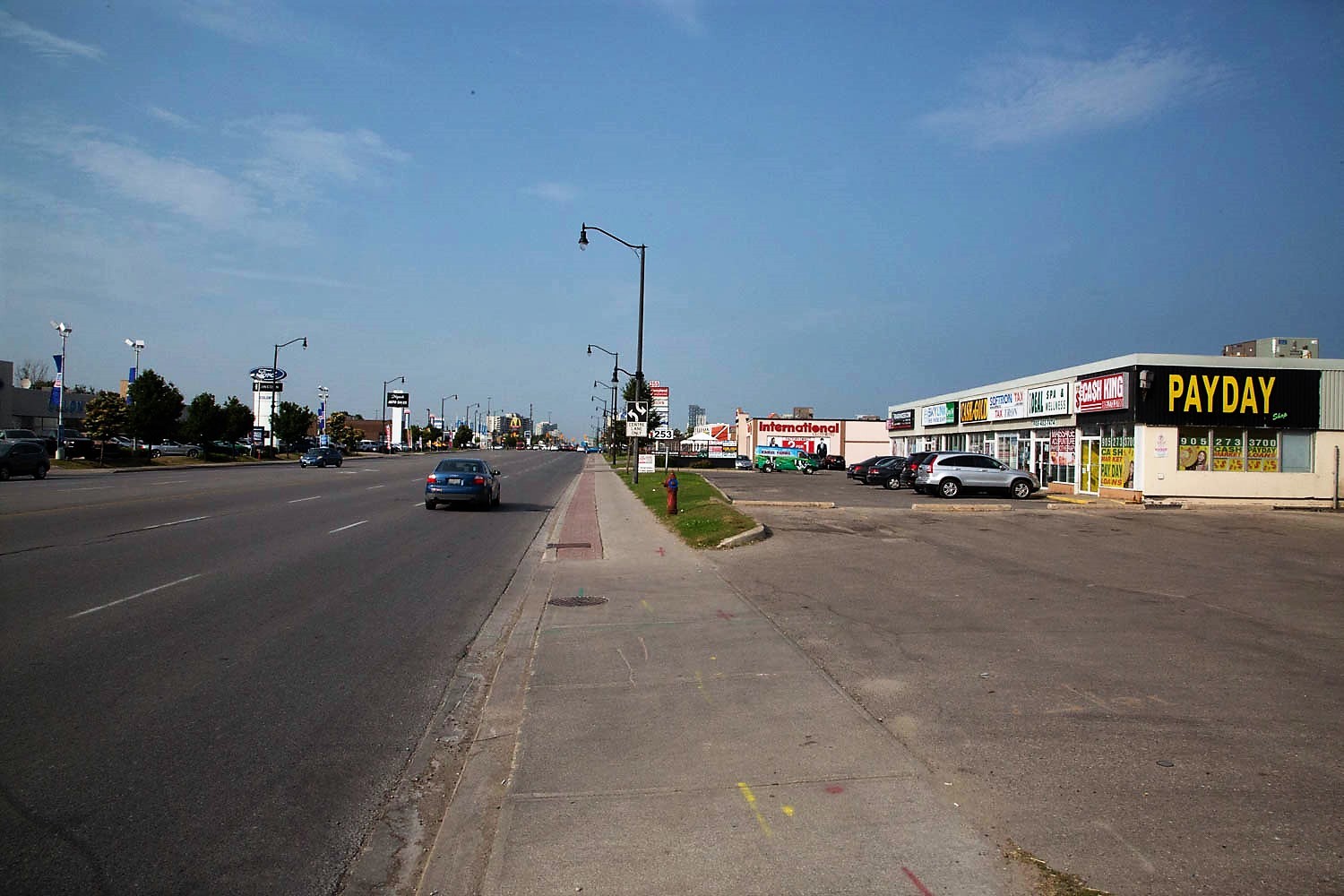
Brown mortgages the future, ignores inevitable cost of repairing pipes, buildings and roads
The aging foundations of Brampton’s community centres don’t care about Patrick Brown’s political legacy. The cracked asphalt that forms the city’s road network is oblivious to political pressure on CAO David Barrick.
Brampton’s $6.3 billion of City-owned infrastructure gets older every year and the need to replace some of it grows more urgent. The cost of needed work rises with the growing price of materials and labour.
It’s a problem faced by cities around Ontario.
Aging infrastructure is reaching critical points as life cycles are, in some cases, past the best before date. Many of the federal, provincial and developer dollars that built much of it have dried up. To preserve their decaying assets, local governments have introduced infrastructure levies: special costs charged to property owners for a specific need, that are effectively a tax, but separated from the actual property-tax line on the bill.
“While Brampton’s infrastructure levy is among the highest of the municipalities reviewed, it still does not... fully address the cumulative asset management deficit,” a Long-Term Financial Master Plan, written for the City of Brampton in 2017, explained.
The document was drawn up to ensure residents have a well-maintained local government for years to come. “In order [to] fully fund all of the City’s asset replacements, an increase in the infrastructure levy to 4.7 percent of the tax levy would be needed.”
Brampton’s current elected and non-elected public servants have done the opposite.
In his latest annual budget proposal, Barrick, who was handpicked by Brown to run City Hall, has cut Brampton’s vital infrastructure levy down from its previous 2 percent to just 0.5 percent. He took a similarly irresponsible gamble in 2021.
Brown has pushed three consecutive freezes with no increase to the property tax during his time in office, with the infrastructure levy one of several items on the chopping block. It means that Brampton’s plans to stop its buildings, fleets, pipes and roads from falling apart are being grossly underfunded.
Brampton’s downtown provides a clear example of why rainy-day funds for infrastructure should be kept. The area is in a state of disrepair, from its broken water mains, crumbling sidewalks and cracked roads, neglected by the City as the area has decayed and attracted widespread property damage and a growing intransigent population.
A recently approved beautification project, alongside infrastructure work by the Region of Peel, will bring some investment to the area after years of protracted negotiations. The City’s portion of this plan, which is just a fraction of the downtown renewal strategy approved by the previous council, before Brown cancelled it, will be funded through debt.

Brampton’s infrastructure ranges from roads to pipes and buildings, all of which will require significant investment to maintain in the years ahead.
(Image The Pointer files)
“By utilizing healthy reserve balances and adjusting the funding model for infrastructure levies, the City continues to be well positioned to refurbish buses, fire trucks and apparatus, roads and stormwater systems,” Barrick writes at the beginning of Brampton’s 2022 budget document.
The claim is demonstrably false.
A 2019 document, titled the State of Local Infrastructure (SOLI) Report, looked in depth at the assets Brampton owns. Using metrics that include its age, the report determined it would cost $6.3 billion to replace buildings, roads and other assets, something that must be done as they age into obsolescence and disrepair. It identified a need to spend just over $1.8 billion across the decade that followed to replace parts of its portfolio.
The report gave good marks to broad categories such as fire or transportation, but this did not represent the full picture. The corporate fleet, for example, was given an overall score of “good”, despite the fact that 52 percent of its off-road equipment was rated as “very poor”. Even categories with positive average ratings required attention in certain places.
The majority of the $1.8 billion required across the decade to repair Brampton’s assets was to come from an infrastructure levy that would add two percent to the City’s total budget every year. The total figure to be raised through the levy was $1.1 billion, an average of $110 million per year for a decade. This would see an increasing portion of tax dollars being dedicated to maintaining the City’s deteriorating assets.
It still wasn’t enough — but would have kept the City on a path to cover the costs of maintaining its infrastructure in a decent state.
In its 2019 plan, the City suggested the majority of funding for asset improvements would come from the infrastructure levy, which will likely be drastically reduced.
(Image from Isaac Callan/The Pointer)
“This level of investment will result in the cumulative infrastructure gap reaching approximately $723 million by 2028, up from its current level of $337 million,” the document said. It identified transportation and parks as two areas that needed the most investment. If the levy was followed, the growing gap would stabilize by the mid to late 2020s. “The concern over an infrastructure gap is not so much that it exists, but how this gap changes over the long-term.”
Under Brown and Barrick, a political hire by the mayor who picked a man with zero experience in municipal governance and served as a former small town councillor in Port Colborne with close ties to Brown’s friends in Conservative politics, Brampton has begun to deviate significantly from its bare-minimum plan, toward even less investment in the city.
The current Brampton budget slashes the infrastructure levy by 75 percent.
“In recent years, the City has been able to achieve a 0 percent change in property taxes, by reducing the operating budget while increasing the amount of property taxes allocated to infrastructure repair and replacement,” the 2022 budget says. “Through this Term of Council, Infrastructure and Transit Levy contributions have increased from $54 million in 2018 to $87 million in 2021, which is equivalent to a 61 percent increase over 3 years or 20.3 percent per year.”
Suggesting a 20 percent increase in the contribution “per year” is misleading since the base infrastructure levy was already established prior to this term of council to meet the bare-minimum needs (the levy grows with the additional two percent infrastructure levy that has been added on top of the base since at least 2015). However, this consistent growth, the bare minimum for what is required to pay for aging assets in need of replacement, will now be interrupted due to Brown’s unwillingness to budget responsibly. Cutting the additional infrastructure levy from 2 percent and the transit levy from 1 percent to just 0.7 and 0.3 percent for 2021 meant that instead of raising $98.2 million this year, only $87 million will actually be collected. And for 2022, the further cut to 0.5 percent for the additional infrastructure levy and 0.2 percent for the transit levy will mean only $90.4 million will be raised, instead of $102.1 million.
Barrick presented a document last year that said the 2022 levy amounts for infrastructure and transit would be returned to 2 and 1 percent respectively, but he reneged on that promise, and instead reduced the levies by even more than what was cut from them last year.
In 2021, CAO David Barrick promised to restore the levies to their previous amounts for 2022 in order to pay for needed infrastructure; he instead has proposed to cut them further.
(Image from the City of Brampton)
The proposed 2022 budget will only make things worse.
Projections from 2019 to 2022 — the four budget documents produced under the current council — show how far the City is behind its own plan. The 2020 budget suggested the base infrastructure levy in 2022 with an additional two percent infrastructure levy on top (these do not include the transit levy) should collect $93.3 million next year alone, a number slashed to $78.2 million in the 2022 budget document, thanks to Brown ignoring the need for a minimum 2 percent additional levy each year to keep assets in safe condition.
“While this principle is prudent during healthy economic conditions, the current social and financial stress faced by the community warranted serious consideration of affordability versus sustainability during development of the 2022 budget,” the budget argues, explaining the decision to delay responsible investment in Brampton’s core assets.
A spokesperson for the City of Brampton referenced the City’s yet-to-be-finalized deal with the Canada Infrastructure Bank as a potential source of relief for infrastructure levy shortfall.
Without proper financial planning, investments into critical infrastructure can be delayed, resulting in much-needed repairs being put off, increasing the risk of failure.
(Image from Natasha O’Neill/The Pointer)
“The City is maximizing opportunities to partner with the federal and provincial governments and has included $49.6M in federal and provincial contributions in the 2022 Budget,” the spokesperson said.
It’s unclear if this full amount has been secured, and if it’s included in the final 2022 budget but never materializes, it’s also unclear how the City plans to make up for any part of the $50 million.
Any funding from a federal loan program could come with two conditions that Brampton is not well positioned to meet: a repayment requirement; and a matching infrastructure investment requirement, for example, to cover a City of Brampton share to purchase new electric buses.
Brown has shown a habit of making claims of funding from higher levels of government, without displaying an ability to secure these funds.
Councillors will hear an update on the City’s asset management plan and the state of its infrastructure during the 2022 budget deliberations. Budget committee meetings will begin on Monday, November 29, with a separate levy to help fund the phase-two expansion of Peel Memorial also potentially on the table.
Email: [email protected]
Twitter: @isaaccallan
Tel: 647 561-4879
COVID-19 is impacting all Canadians. At a time when vital public information is needed by everyone, The Pointer has taken down our paywall on all stories relating to the pandemic and those of public interest to ensure every resident of Brampton and Mississauga has access to the facts. For those who are able, we encourage you to consider a subscription. This will help us report on important public interest issues the community needs to know about now more than ever. You can register for a 30-day free trial HERE. Thereafter, The Pointer will charge $10 a month and you can cancel any time right on the website. Thank you
Submit a correction about this story


